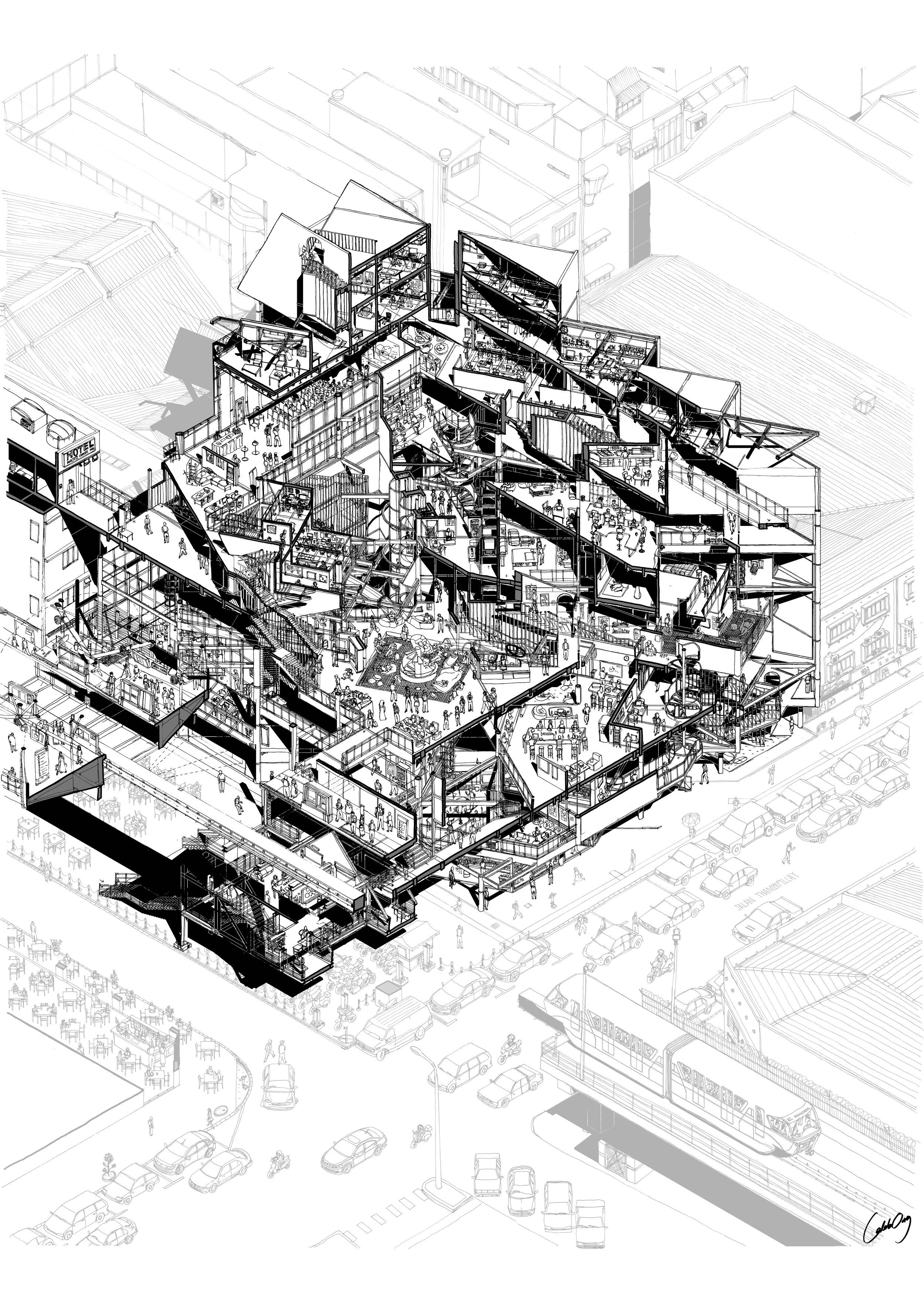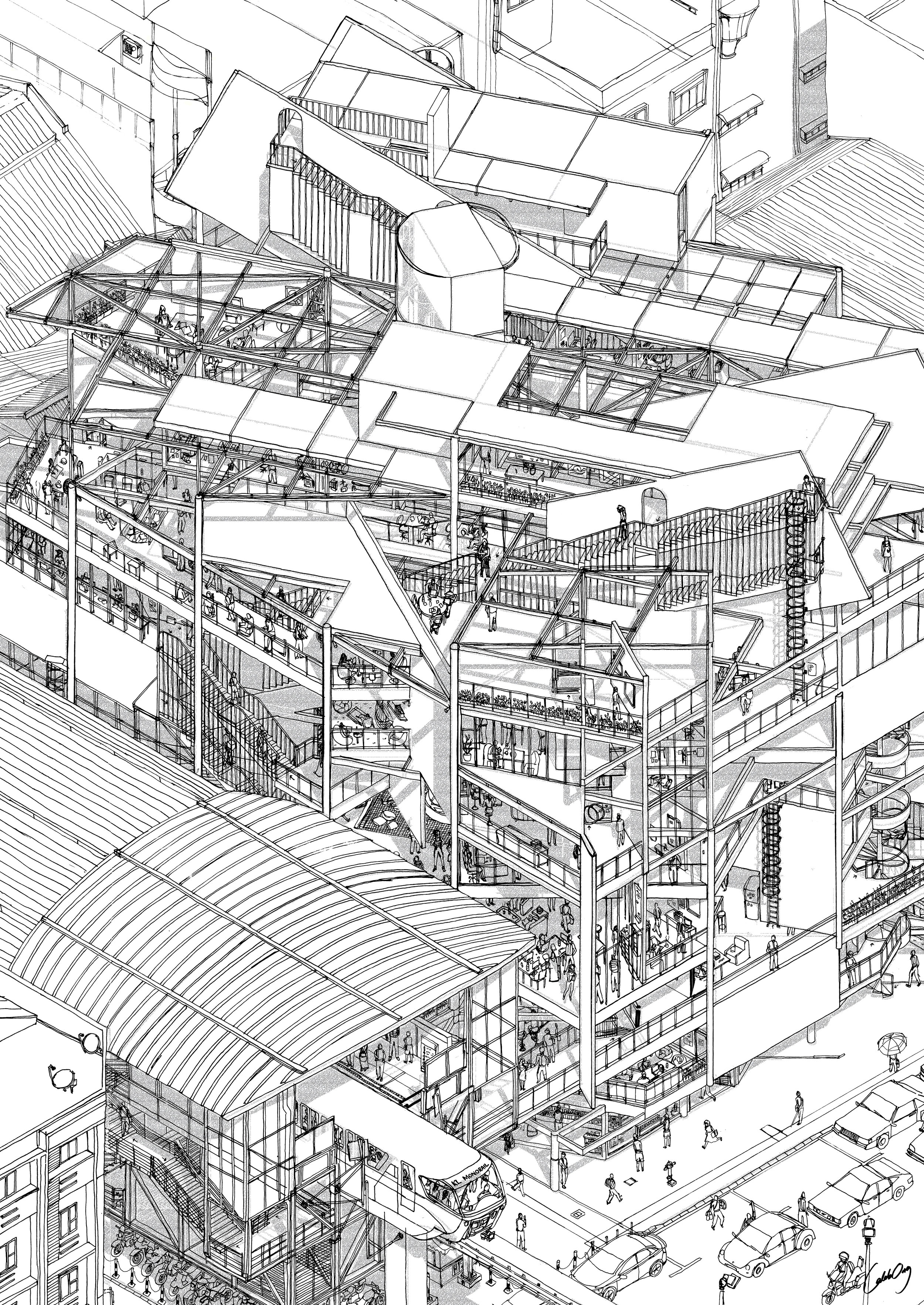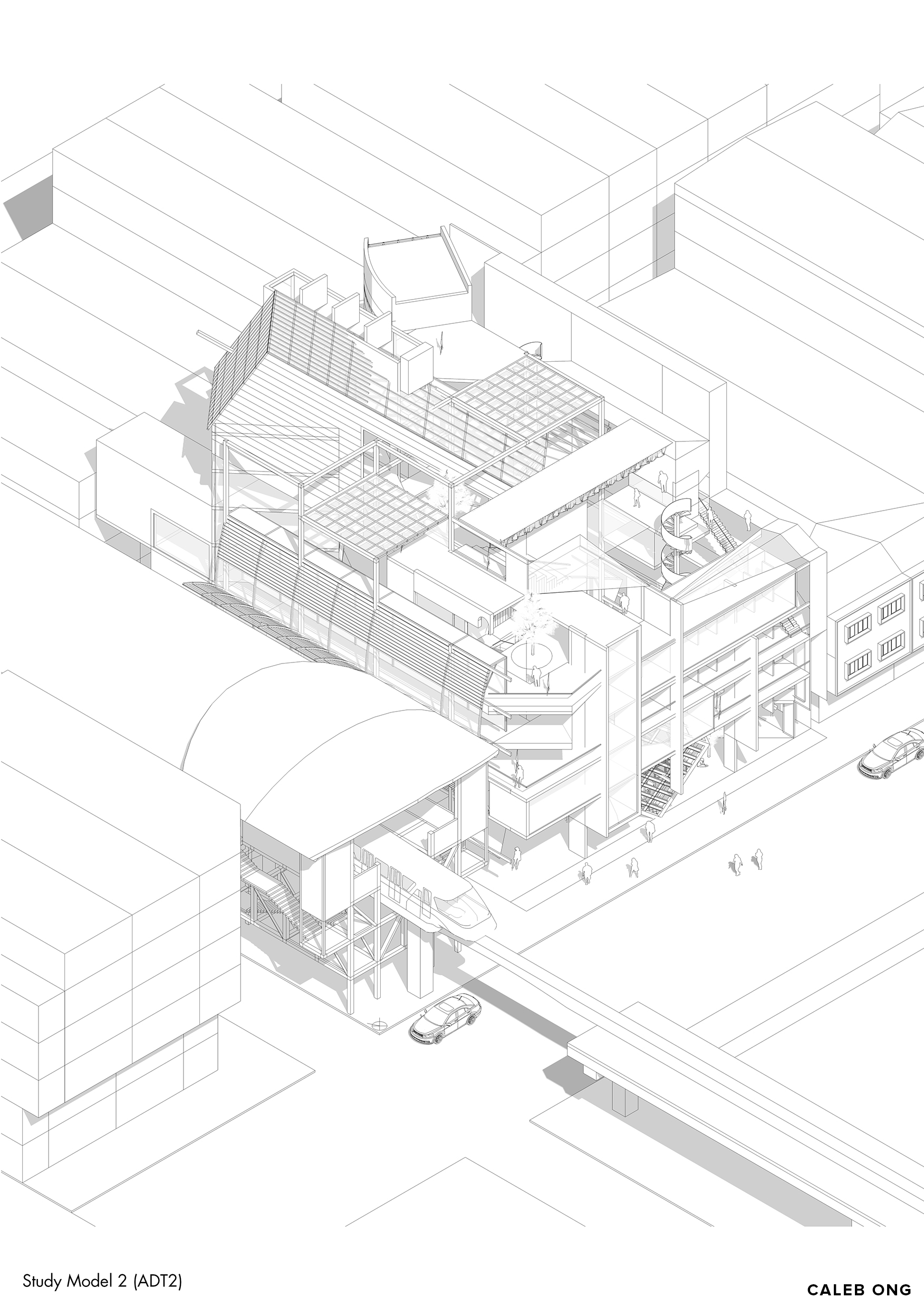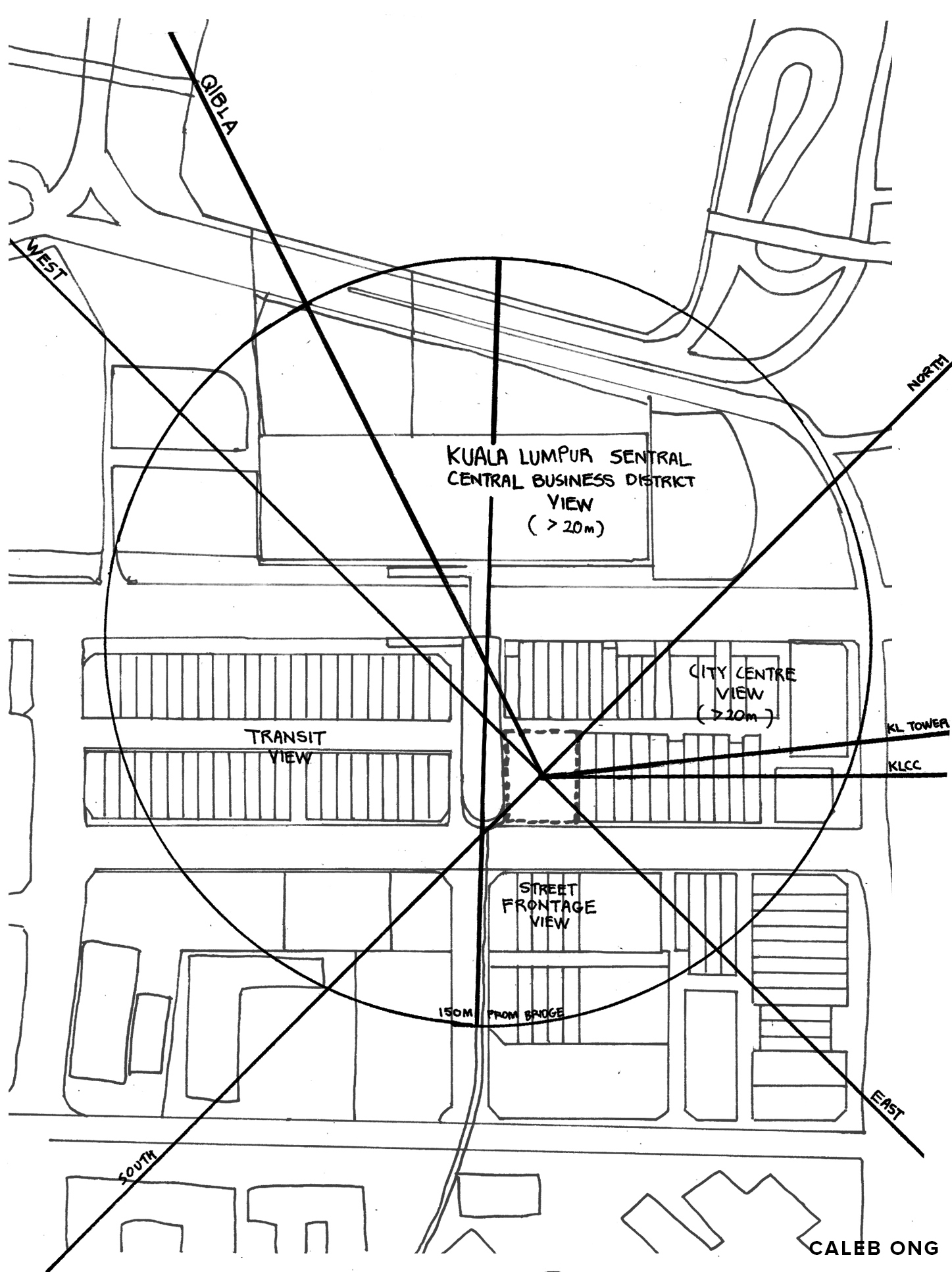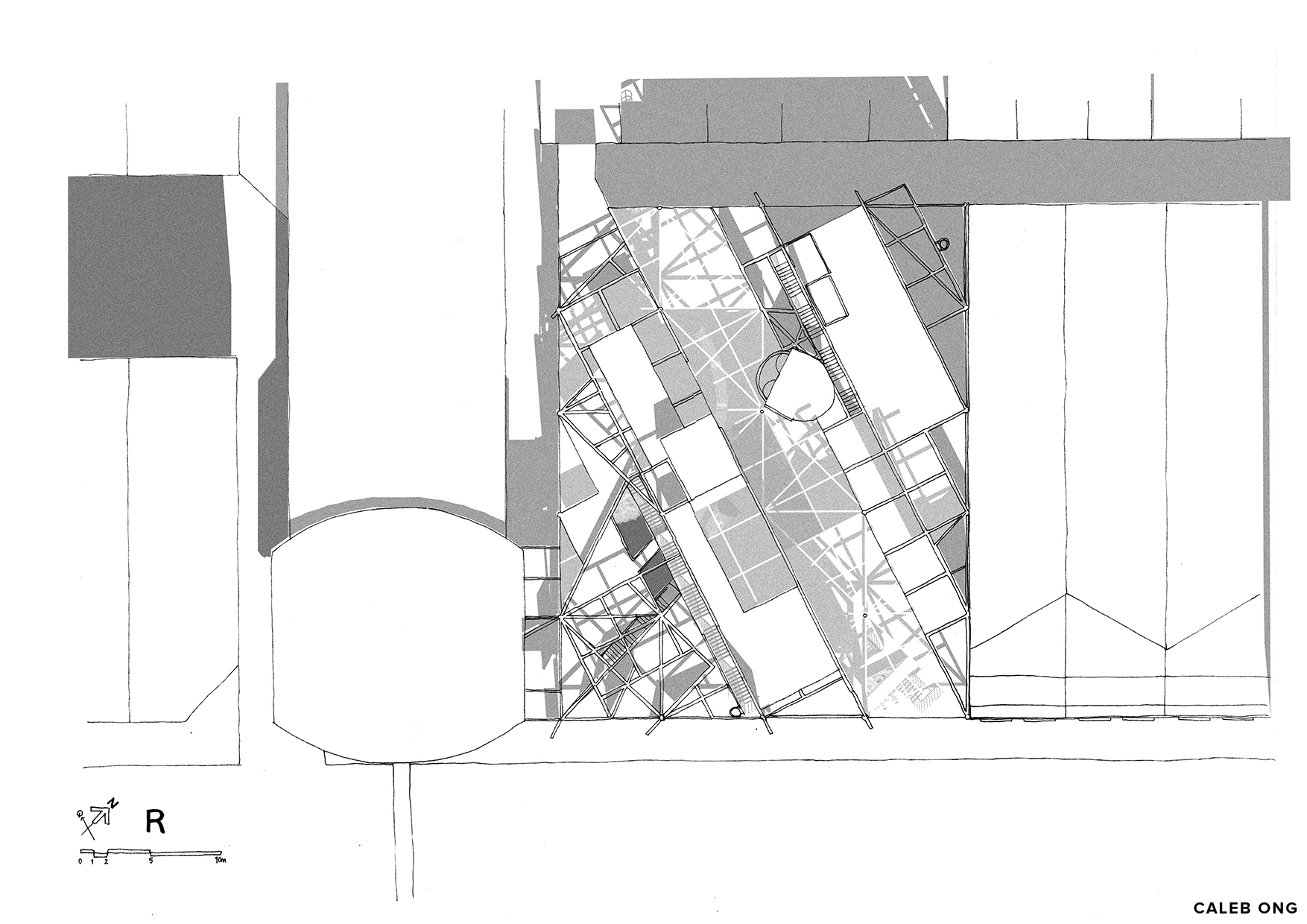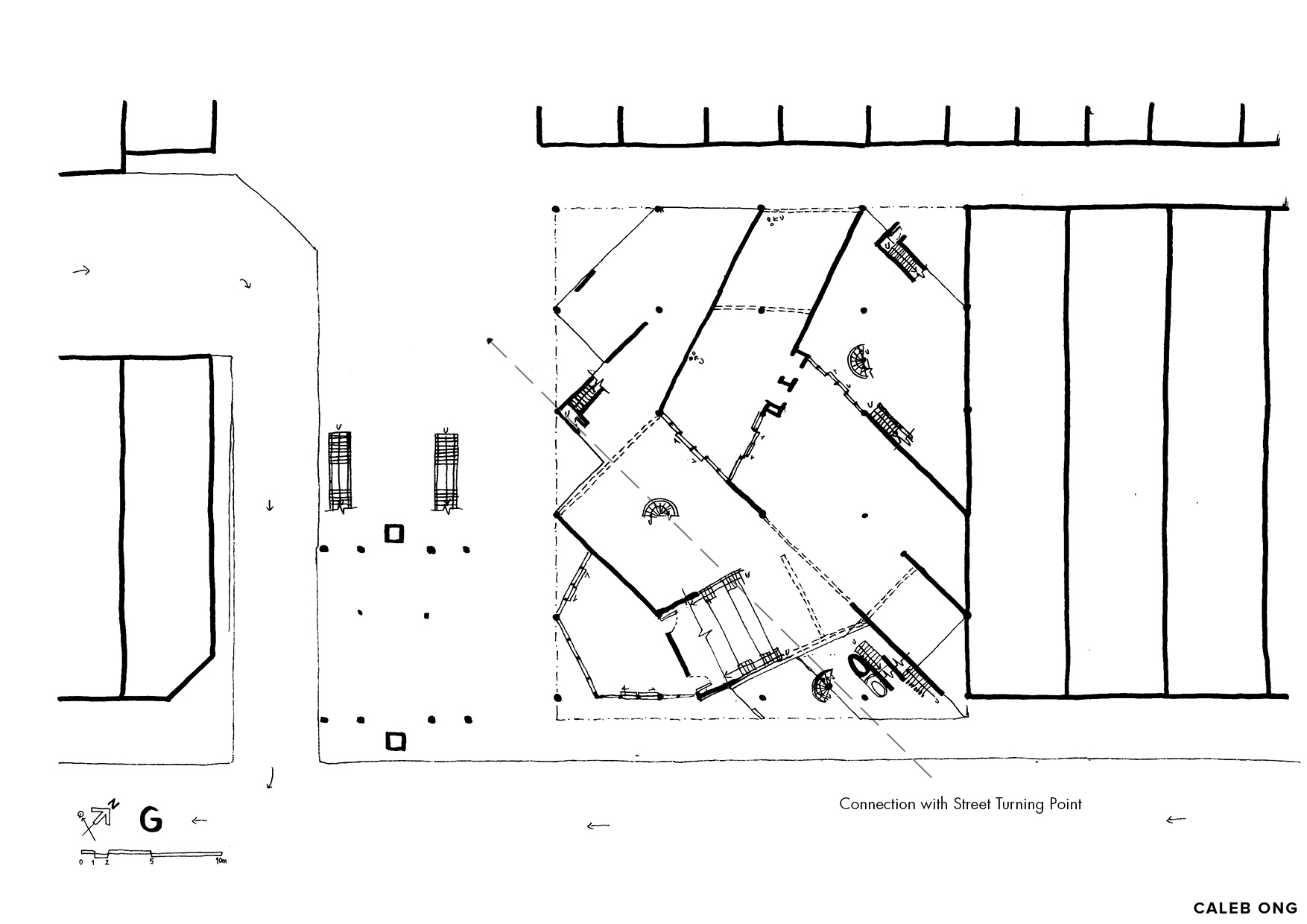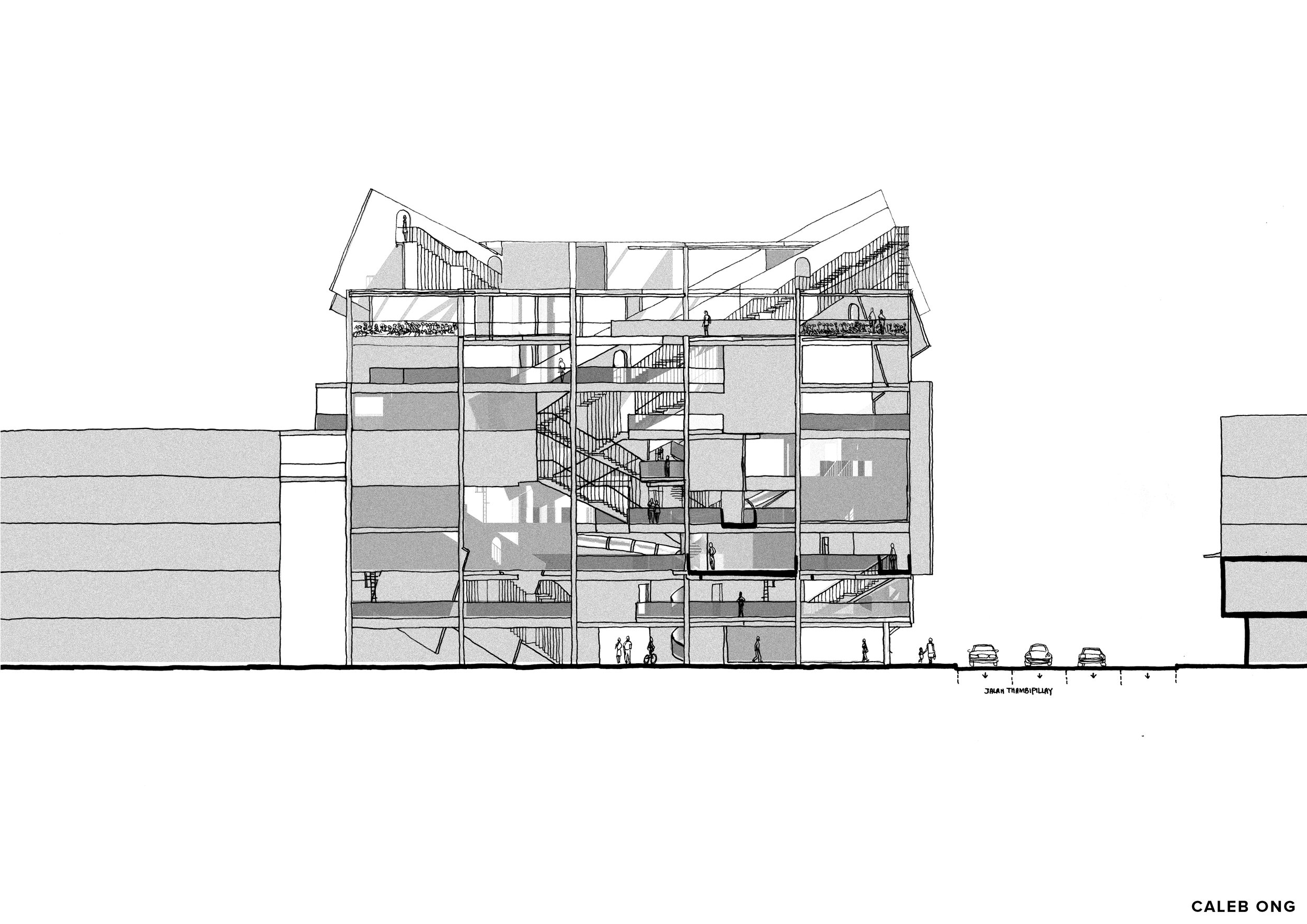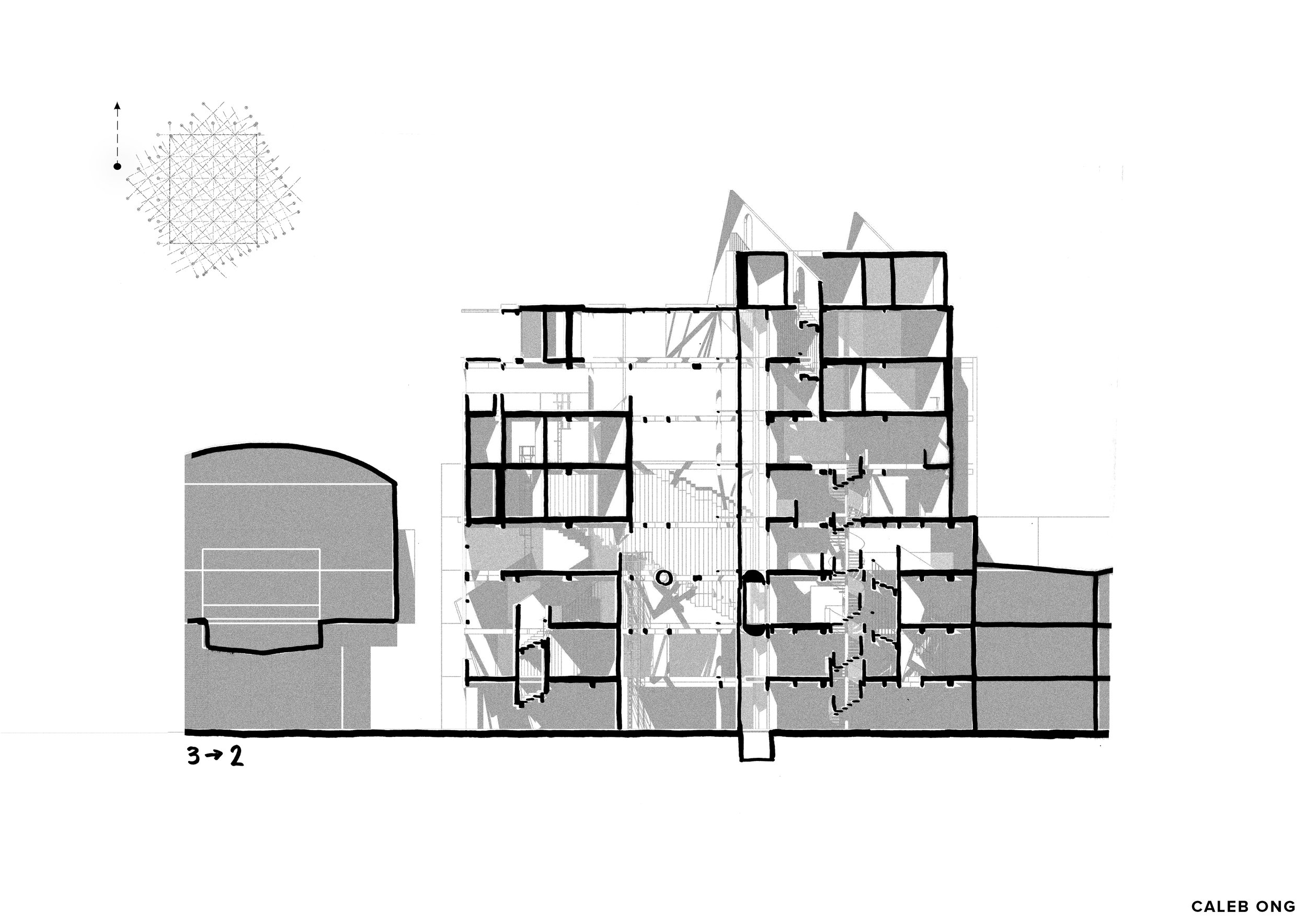The Unending Square
Disjunctions and Cospacing for Coworking
This is in continuation of the thesis project for M'Arch Semester 4 at Taylor's University.
Part 1 of the Thesis
The thesis investigates the limit of Tschumi’s architectural disjunction in providing a multiplicity of readings in fictional and reality to create dynamic movement and interaction in the contingent of coworking community that drives change, embraces organised chaos, uncertainty, and has a high demand for humans’ interaction amidst the diurnal and nocturnal coworking community of sharing.
PROJECT INFO
Involvement : Architectural Thesis Part 2 of 2
Idea : Disjunction and Cospacing for Coworking
Location : Brickfields, Kuala Lumpur
Building Program : Coworking spaces (hotdesk and fixed), Event, Utility, Amenity, Retail, Storage and various servicing spaces.
Gross Floor Area : 6300 sq.m.
Date : July 2018
Supervisor : Ar. Lee Cherng Yih @ http://www.formzero.net/ or https://moaa.my/
Drawing of the year 2019 by Archisource: https://archisource.org/drawingoftheyear2019/winners
One Drawing Challenge 2018 Finalist by Architizer: https://onedrawingchallenge.secure-platform.com/a/gallery/rounds/6/details/4800
Honorable Mention Top20 for Tamayouz International Graduation Project 2018 Award:
https://tamayouz-award.com/tamayouz-international-graduation-projects-award-2018-winners-announcement/
Finalist of NON Architcture Competition (Alternative Designs for Offices):
https://www.nonarchitecture.eu/portfolio/the-unending-square/
